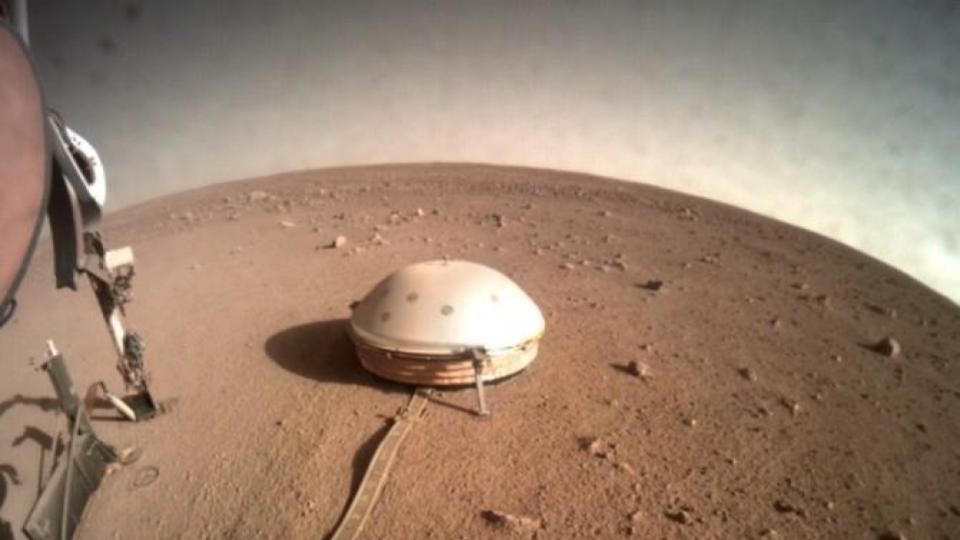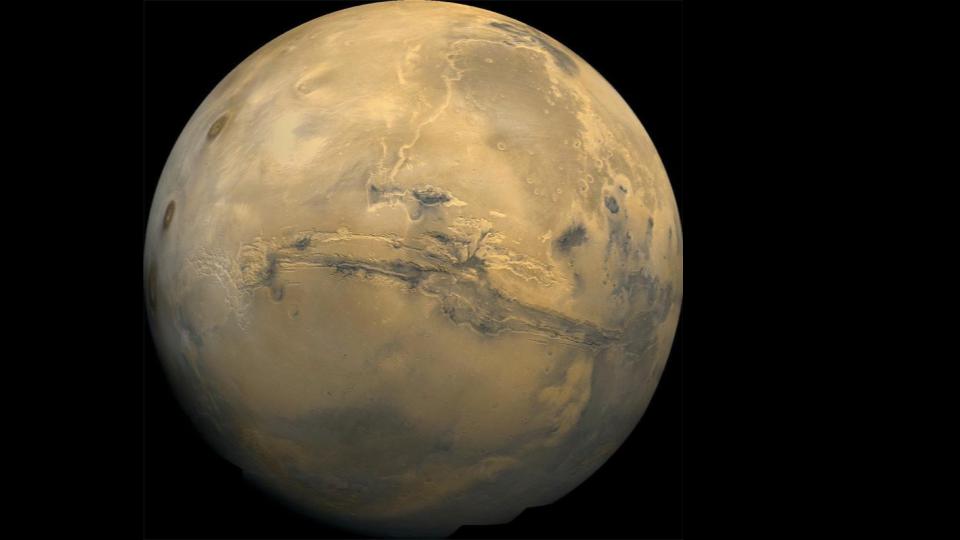The latest issue of Nature Geoscience is a special issue filled with new science from the Mars Insight mission. We bring you the highlights and make sense of some of the click bait headlines you may already be seeing.

Yesterday, we gently laughed at the silly and creative means that the Mars InSight team is using to try and get their mole back to burrowing. Today, as though trying to overwrite all the Mars mole frustrations with good news, the InSight team has completely buried us in science results. This flood of information comes to us thanks to a special issue of Nature Geoscience that focuses on Mars science. The results you are most likely to hear are the MarsQuakes measured by InSight’s seismometer. The University of Maryland headline proclaims “First Direct Seismic Measurements of Mars Reveal a Geologically Active Planet.” While you may hope this means active magma motions and the potential of future volcanic activity, … well… it’s not that exciting. The force of the local wind was sufficient to obscure seismic signals, and it was only during the still nighttime hours that the seismograph was able to detect often multiple shakes per night. Only one magnitude 4 quake was detected and the rest of the 450 some odd detections were much smaller. These weak signals weren’t able to penetrate deep into Mars’ crust, so we remain blind to what is deep in Mars, but a picture of the crust is getting slowly built. While most quakes couldn’t be successfully identified with a specific place, 2 could be tracked back to the Cerberus Fossae region. This long feature on Mars was carved by ancient floods, and then filled with lava flows just 10 million years ago and is still clearly settling out, with cracks in the lava from the quakes. While it will be interesting to watch what happens, there is no hint that volcanism or anything that exciting is expected. Mars is estimated to be more seismically active than the moon – making it more active than expected – but it is not like Earth.

- First Direct Seismic Measurements of Mars Reveal a Geologically Active Planet (U of Maryland)
- InSight detects gravity waves, low rumbles and devilish dust (Cornell)
- Seismic activity on Mars resembles that found in the Swabian Jura (DRL.de)
InSight was designed to study both the inside of Mars and its atmosphere. Another announcement that is likely to generate confusion is the discovery of gravity waves in the Martian atmosphere. This is one of those times when different branches of science have given radically different things confusingly similar names. Gravity waves are just oscillations in the atmosphere that drive the formation of the rolling sheets of wavy clouds you may have seen, especially at dawn or dusk. While Gravitational Waves are driven by massive objects and warp the space time continuum, gravity waves are just pretty. On Mars, with a thin dry atmosphere, clouds are less common, but the InSight sensors could detect the pressure changes that come with gravity waves moving through the atmosphere. These sensitive sensors also detected the pressure and temperature changes consistent with dust devils – thousands of dust devils – but annoyingly the cameras on InSight have failed to be able to see any of the dust devils. The annoyance is stated beautifully by team scientists, Cornell research Don Banfield, who stated, “We’ve caught absolutely no dust devils on camera. Other landers have more effortlessly imaged dust devils, so it’s surprising that we haven’t even captured an image of one.” This is where the importance of in situ instruments – sensors in place on the surface of mars – can be. Orbiters and distant telescopic observers can’t see these pressure variations, but the sensors can make out these invisible cyclones and hidden gravity waves.

From seismic waves to gravity waves, InSight seems to be on a mission to study every possible kind of wave, and in our final story of the date we look at magnetic fields… which deals with electromagnetic waves. In new results from PSI’s own Catherine Johnson, Mars’ magnetic field at InSight’s location was found to be significantly stronger than anticipated, but it is still so weak that a day-to-night change they are measuring may be due to detecting magnetic fields from space. Let’s unpack that. Mars has no intrinsic magnetic field that is driven by an internal dynamo. Instead, it has rocks that are natural magnets and maintain a fossil record of how the magnetic field was aligned in the past. Different places have different amounts of the ancient magnetic rocks, and InSight is a particularly magnetic place. Even though this location has 10x more magnetic field than was expected, it is still only a shadow of what we see on Earth, and against this background local magnetic field, InSight was able to measure a nightly spike of magnetism around midnight each night. This timing leads scientists to believe the magnetic spike is coming from space, and in the future it’s hoped that InSight and the orbiting Maven mission will be able to make coincident observations to try and understand the source of this midnight magnetism.
All this news comes together to tell us one glorious thing – Mars, which we knew was interesting, is turning out to be even more interesting than we had previously thought. Here is to hoping that InSight has many more years of observations in its future.
<———————>
And that rounds out our show for today.
Thank you all for listening. The Daily Space is written by Pamela Gay, produced by Susie Murph, and is a product of the Planetary Science Institute, a 501(c)3 non profit dedicated to exploring our Solar System and beyond. We are here thanks to the generous contributions of people like you. Want to become a supporter of the show? Check us out at Patreon.com/cosmoquestx


 We record most shows live, on Twitch. Follow us today to get alerts when we go live.
We record most shows live, on Twitch. Follow us today to get alerts when we go live.